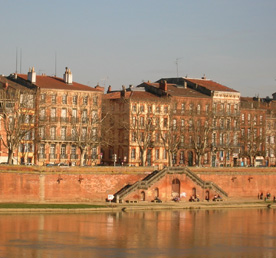To audit and
calculate the real property tax, in order to detect unfair situations and
cases of surcharge, the normal way is to ask the French tax administration a
copy of the file of the building.
This will
give you the information about the reference
 premises chosen by the tax
administration to tax your own building, and will allow you to see if this
selection is appropriate.
premises chosen by the tax
administration to tax your own building, and will allow you to see if this
selection is appropriate.
Sometimes the
answer of the French tax administration ("Centre des impôts foncier", or CDIF)
is delayed, so a better choice can be to go directly to the source and try to
find the reference premises directly, to be able to discuss its land registry
rental value.
This
approach won’t always bring a positive result if several reference premises
have close rates, but it is often saving time.
To use this
approach, it is necessary to gather :
- The last tax
demand of the real property tax,
- The
Report
gathering all the reference premises of the “Commune” (Form n° 6670) : a
document that you have to pay (expensive for big cities), which can be
obtained from the CDIF (see model under the heading "Forms")
- The table of
county coefficients from 1970 to 1980,
- The table of
national cumulative coefficients from 1981 to 2007,
- The number of
square meters of your building.
The
possibility to ask the only page of the Form n° 6670 where is the reference
premises chosen by the tax administration, is not a good solution, because, if
you have not all the pages of the Form n° 6670 you won’t be able to realise a
comparative analysis between the reference premises used by the tax
administration and all the reference buildings of the “Commune” (see "The 10
Steps" of the process).
From the tax demand, you can go back to the
assessment basis of the
building.
1 - Start
from the tax demand
On
the tax demand of the real property tax on developed land appears the assessment
basis of that tax, which, after multiplication by the annual rate, is
giving the amount of the annual real property tax.
For
example, take an assessment basis of 10.000 Euros for a business building
located in Toulouse.
The
assessment basis for the developed land, is 50% of the registry rental value of the
building.
So, in our
example, the registry rental value of the building in 2007 is 20.000 Euros.
2 - Determine
the registry rental value of the building in 1970
For this
point, two
operations are necessary :
Remove the
impact of the cumulative national coefficient used for the years 1981 to 2007.
You’ll find
the coefficient table and cumulative coefficient table for buildings other
than industrial buildings (under the accounting method) in the "Diagnosis"
chapter of the site.
The national
coefficient in 2007 is 1,018.
The
cumulative national coefficient from 1981 to 2007 is 2,688.
Result =
20.000 : 2,688 = 7.440.
Remove the
impact of the county (“département” of Haute-Garonne, code n° 31) coefficient
from 1970 to 1980.
You’ll find
the table of county coefficients from 1970 to 1980, concerning the buildings
other than industrial buildings (under the accounting method) in the
"Diagnosis" chapter of the site.
The county
coefficient for Haute-Garonne (in this example) is 1,88 (for commercial
premises).
Result =
7.440 : 1.88 = 3.958.
The
registry rental value of the building in 1970 was to 3.958.
3 –
Evaluate the
surface of the building
For
commercial premises, the surface of the building is weighted.
From
the real surface, the calculation of the weighted surface will use the surface
weighting Table for commercial premises located in the "Diagnosis” Chapter of
the site.
To
simplify, the approximate result is :
- the surface
of the first 5 meters deep is weighted to 1 and beyond, to 0,5.
- the rear
shops, reservations, etc. are weighted to 0,33,
- the
basement is weighted to 0,20 and the cellar and attic to 0,10.
Suppose
premises with a 350 m2 real surface (50m facade x 7m) : the weighted surface
will be (front 50m x 5m x 1 = 250 m2 weighted) + (2m x 50m x 0.5 = 50 m2
weighted) = 300 m2 weighted.
Concerning
premises for residential use or professional premises (different from
commercial premises), a weighting of the surface needs also to be realised.
You will find, to help you, a file for this sort of premises in the
"Diagnosis” Chapter of the present site.
4 - Reduce the registry rental value from 1970 in weighted m2, and compare the
result with the tariff of the reference premises
chosen by the tax administration
The registry
rental value from 1970 (3.958) divided by the number of weighted m2 (300) sets
the tariff by weighted m2 (13,19 Euros).
This tariff
(13,19 Euros) must match the reference premises tariff (see Form n° 6670 :
Report gathering all the reference premises of the “Commune”) chosen by the
tax administration to tax your building.
Then, you
will have to determine whether the choice of the reference premises was
appropriate or not.
Although the
weight of regions and departments (counties) in local taxation is currently
much lower than the one of the “Communes”, a risk exist that this weight would
increase in the years to come.